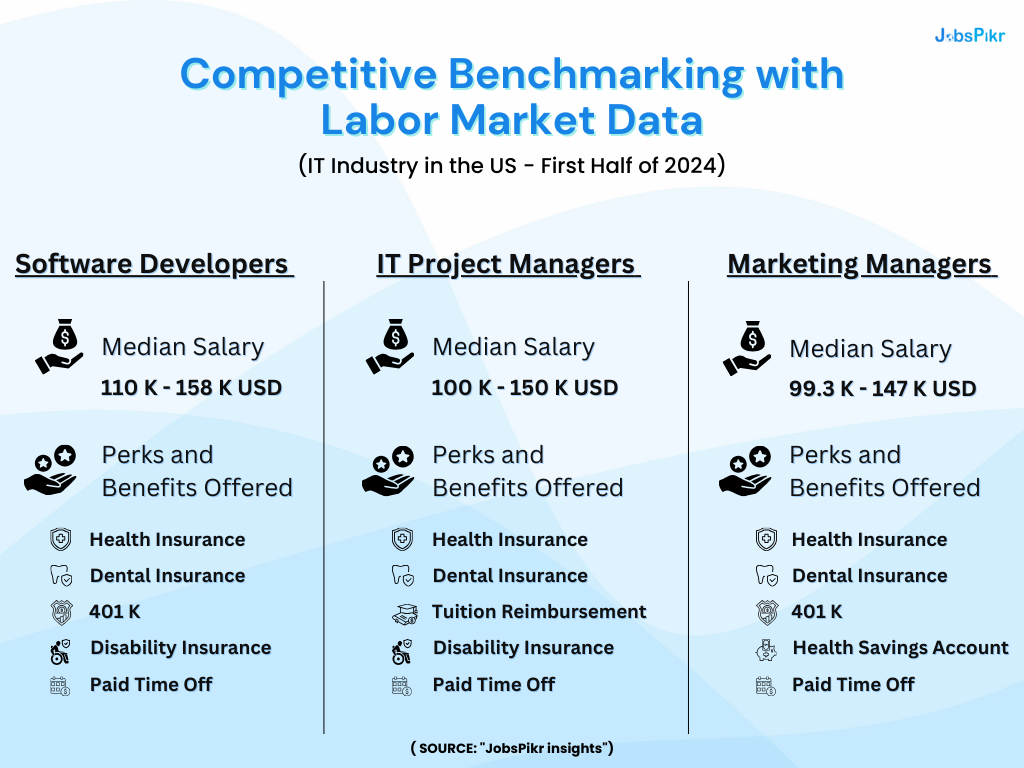Attracting and retaining top talent is critical for a company’s success. Businesses can no longer afford to operate in isolation when it comes to their hiring practices. To stay ahead, they need to understand how their compensation and benefits packages measure up against those of competitors. This is where competitive benchmarking with labor market data becomes a game changer.

The Importance of Benchmarking in Talent Acquisition
Competitive benchmarking involves analyzing your company’s salary structures and benefits against industry standards. By doing so, you gain insights into what your competitors are offering, enabling you to adjust your packages to attract top-tier talent. With JobsPikr’s extensive labor market data, businesses can access real-time information to compare compensation packages across industries and roles.
With JobsPikr’s extensive labor market data, businesses can access real-time information to compare compensation packages across industries and roles. This level of transparency is crucial, considering that 49% of employees say they would leave their current role for better compensation and benefits, according to a report by Willis Towers Watson.
For example, let’s take a look at the US IT industry:
- Software Developers earn median salaries between $110K and $158K, with perks such as health insurance, 401K, disability insurance, and paid time off.
- Information Technology Project Managers make between $100K and $150K, with additional perks like tuition reimbursement.
- Marketing Managers in IT roles earn between $99.3K and $147K, and receive health savings accounts along with other standard benefits like dental insurance.
Using This Data to Stay Competitive
By benchmarking your compensation packages against industry averages, you can adjust your offerings to stand out as an employer of choice. For instance, if your salaries are slightly lower than the median range, you might consider offering additional perks like a flexible work environment, remote working options, or professional development opportunities to balance out the difference.
In addition to salary, perks play a critical role in competitive benchmarking. For instance, tuition reimbursement for project managers can be a huge draw, particularly for mid-level professionals looking to advance their skills. Similarly, offering a health savings account or wellness programs can appeal to younger employees prioritizing long-term financial and physical health.
How JobsPikr Can Help
With JobsPikr’s data, you have access to actionable insights that allow you to compare your hiring practices not just at a macro level, but by specific roles within industries. This enables you to stay informed about how your company stacks up against competitors and make proactive adjustments.
Conclusion
Competitive benchmarking with labor market data is no longer a luxury—it’s a necessity. By staying informed and leveraging insights from tools like JobsPikr, businesses can refine their hiring strategies, offer compelling packages, and ultimately attract and retain top talent.



